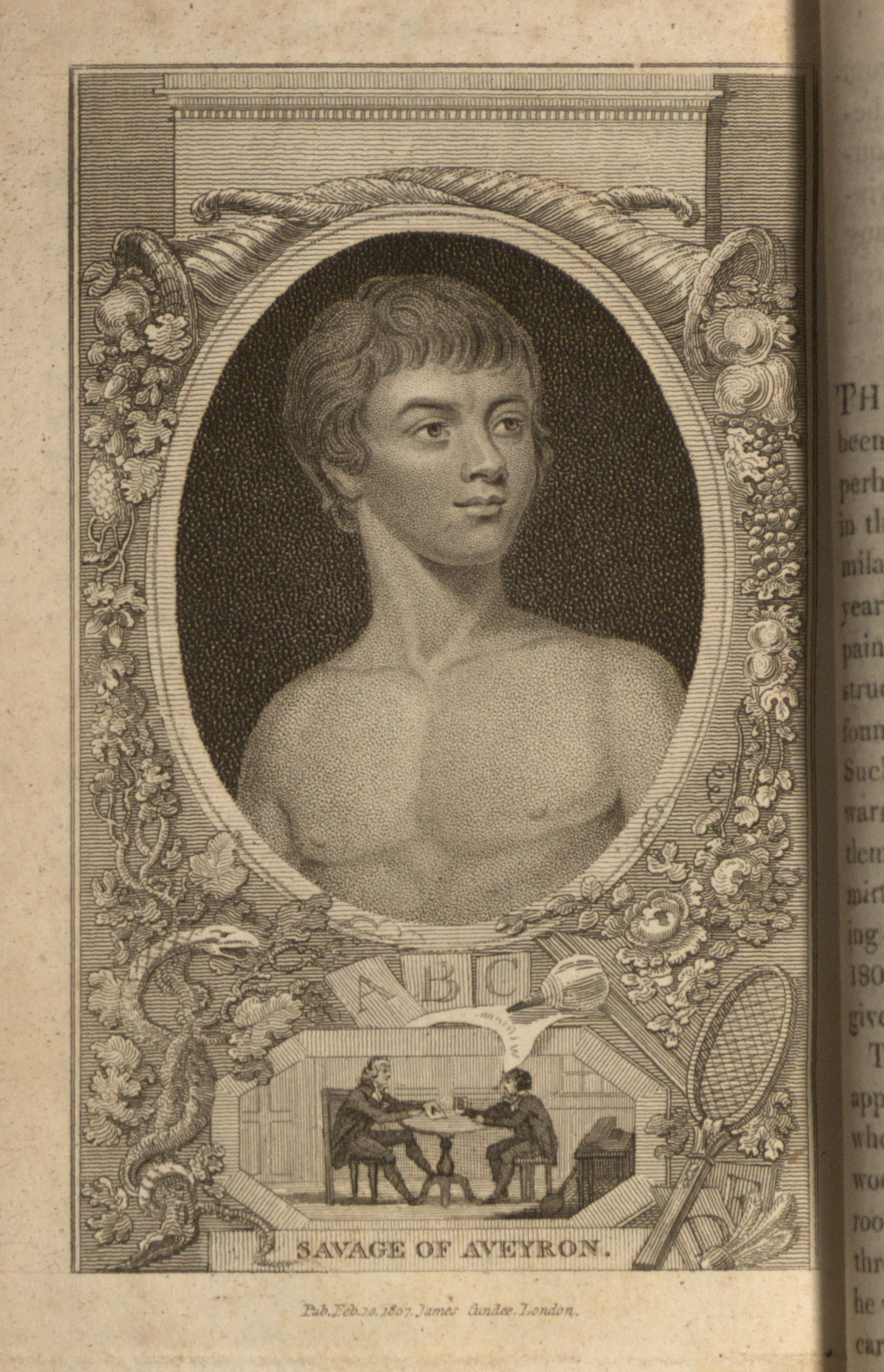Exhibit
Creation Date
1807
Height
15 cm
Width
10 cm
Medium
Genre
Description
A young, nude boy is depicted against a dark background in a bust medallion. Two cornucopias entwine above his head, spilling forth fruit and foliage as a border around the frame. Below is a smaller scene in which a teacher and pupil sit at a round table for a lesson in literacy. This smaller panel is flanked by a snake on the left and a badminton racket and birdie on the right. Between the primary and secondary images are pasteboard alphabet cards, a book, and a stylus with paper.
Encyclopedic volumes of eccentric or notable characters, such as Wilson's, were produced to entertain and educate, but also worked to establish visual and behavioral categories of normalcy and deviance.
The attempted domestication of Victor, the "wild child," or white European boy found living in the wilderness, speaks to the presumed correlation between stasis, education and civility and presents his previous mobility as an affront to these values.
The author concludes that Victor is “a victim of that revolution, which occasioned the shedding of such torrents of innocent blood,” and which seems to have left the young boy in a scarred and orphaned state (Wilson 2).
The wild child, or white European boy found living in the wilderness, presents a unique challenge to the Romantic understanding of savagery as culturally or biologically determined. Victor, a boy of French parentage, is seemingly a savage, though it is assumed that his savagery is a product of his environment and lack of education rather than an inherent or racial difference. He is brought to Paris in the hope that he will throw “some new light on the moral philosophy of man” (Wilson 4). As with other wandering figures, the wild child serves as another means by which the English can differentiate themselves from the French. Victor is both the presumed product of the French Revolution, becoming an embodiment of the anarchy it spawned, and the ideal of an untouched, natural intuition, which is unmoved by the “formal regularity” of French landscaping (Wilson 13). He can simultaneously signify both the failure of revolution—the son defeats the father, but is left an orphan without language or history—and the promise of rebirth through a return to nature, or preferably, a “natural” English garden.
Collection
Accession Number
Thordarson T 2645
Additional Information
Bibliography
Wilson, G.H. The Eccentric Mirror. Vol. 1. London: James Cundee, 1806. Print.

